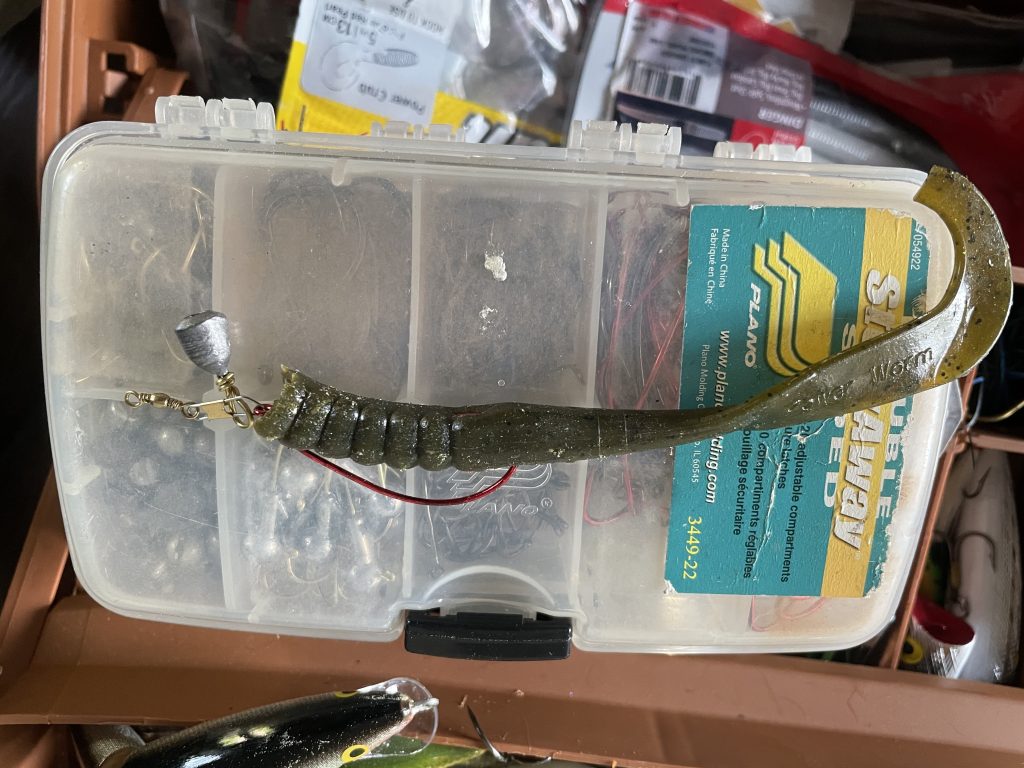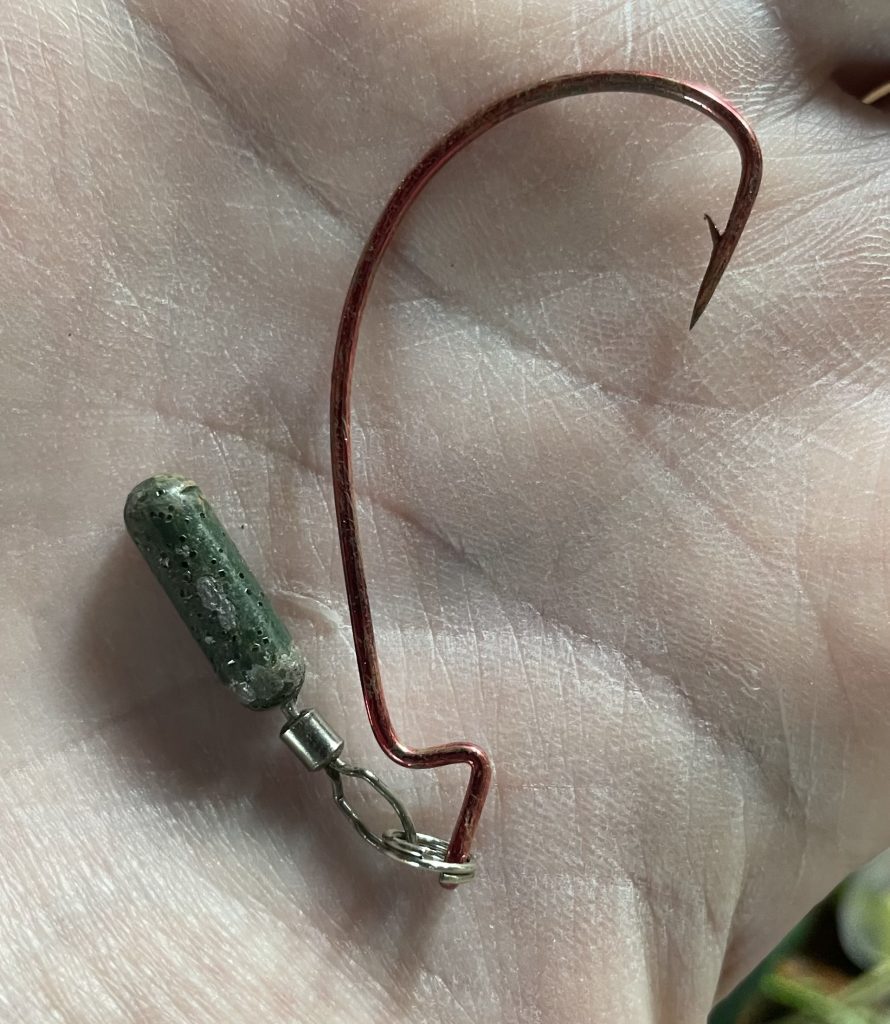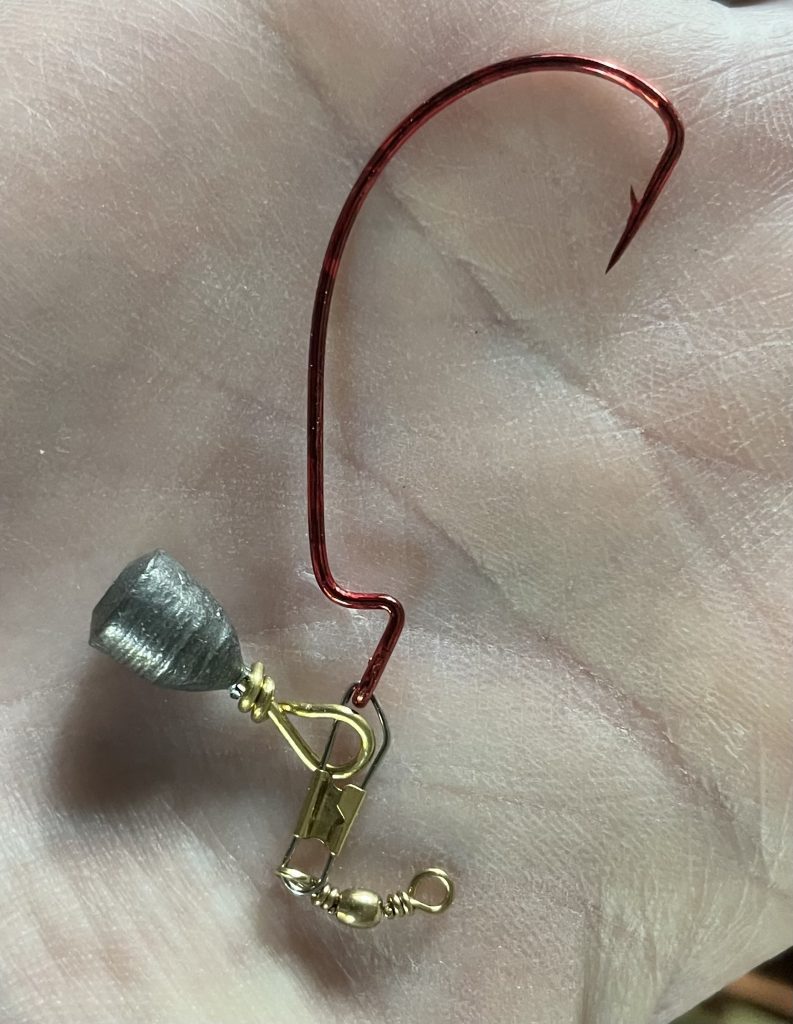
You’ve probably heard of a Texas rig, a Carolina rig, and a drop shot rig. You adventurous anglers have probably had your forays with “exotic” rigs like Neko rigs, Ned rigs, drop-shot rigs, and the sweetwater translation of the umbrella rig, the Alabama rig.
Now get ready for something you also, without a doubt, 100% need to add to your angling repertoire, the Jika rig.
This thing is actually not new. Back in the days when Wawa’s in my area still carried “The Fisherman” magazine, which was printed on simple newsprint and only cost two bucks, I “officially” learned about this rig.
I say officially, because (not to brag, honestly) I invented this rig on my own without the knowledge that half a world away, and to select anglers stateside, it was already a thing.
Background: I loved fishing weightless soft plastics, but I also recognized there was a time and place to fish them deep. Specifically, I needed a rig that was versatile enough to get the soft baits down to where skittish fish were holding, both in high and low temperature conditions, corresponding to early spring and late summer.
I also needed a rig that improved casting distance over weightless, and provided unfettered lure movement on the presentation.
You’re thinking Texas rig, or maybe a Carolina rig, right?
Well, they solve some problems. They offer great casting distance and the flexibility to get a lure down deep.
The problem is, with both rigs, the weight is tacked directly onto the line. This hampers the free movement of the lure.
Also, with the Carolina rig, the weight is free to slide up and down the line or the leader. This creates as many problems as it solves, not the least of which is a delay when it comes time to set the hook.
I needed something more responsive than both the Texas or Carolina rigs, that was more versatile than the drop-shot rig, which is a known performer in both very hot and very cold water
Enter this thing that I improvised about ten years ago.

It’s a split ring, attached to which is both a work hook and a casting weight, though a tear drop or drop-shot weight will work as well.
To rig it, simply rig the plastic as you would a Texas rig and tie the split ring onto your line or leader or attach the split ring that contains the rig onto your snap swivel.
There are several important advantages that this offers to discerning anglers, which specifically make it better than all of the other rings mentioned in this article.
The split ring separates the weight from the hook. This enables the hook and weight to move independently of each other.
This gives the soft bait much freer movement on the end of the line. At the same time, it keeps the weight close to the hook and lure, which improves casting distance.
Keeping the weight close to the hook and lure also allows the angler to set the hook with greater expediency. It diminishes the delay presented by both Carolina and drop-shot rigs.
Here’s the scoop. I actually improvised this rig about ten years ago. Unbeknownst to me, innovative anglers were doing the same thing in Japan and that enterprising American anglers had adopted the technique stateside.
They call it a Jika rig – which is pronounced “zee-ka,” by the way – and it’s highly effective on a wide range of warmwater species that are holding deep, from bass to pickerel and crappies. I’ve also caught bluegill on it, even if they can barely fit the worm hooks in their mouths.
To do it the orthodox way, you need split rings, worm hooks, and weights that have eyelets, like casting weights or drop shot weights. Work the hook and weight onto the split ring, rig up a soft plastic, and fish.
That is the way to do it – but I have an easier way that I’ve improvised on the fly when I forgot to take some split rings out with me.
Now, you can buy these rigs for several dollars each, or you can make them yourself. I know which route I’ve taken. I might pay for swivels, hooks, weights and split rings, but personally, I will never pay for prefabricated rigs that I can make on my own.
Seriously, why pay for this stuff when you can do it yourself? For instance, I like Bass Pro, but seriously, look at this. more than five dollars each. I have far better things to do with my money.
You still need a worm hook, a weight like a casting weight, and a snap swivel – but if you have those, you can improvise the rig.
How You Can Improvise a Jika Rig in Seconds and Start Hauling Them Out
If you want to improvise this setup, just let the snap swivel take the place of the split ring.
Drop the weight on the swivel, followed by the hook. Use the illustration below as a guide.

Then thread on a soft bat – either Texas rigged or Tex-posed, as shown below.

You can use any soft bait with this technique, from stick baits to curly tail grubs to Zoom flukes. It’s effective in every configuration.
Fishing this rig is as flexible as the number of baits with which it’s compatible. You can hop it back across the bottom, yo-yo it through the middle of the water column, cast and twitch, or even give it a straight retrieve at a constant depth.
Do what works, considering the circumstances, and be open to changing your presentation based on what the fish respond to.
One thing I will offer is that this type of rig is highly effective in cold and hot water when fish are skittish and holding deep in the water column or on the bottom. That said, it’s effective at all times of year as well.
Improvise one and give it a go. It’s been bending rods for me for over ten years.
Tight lines and be safe on the water.
~The Eclectic Outfitter